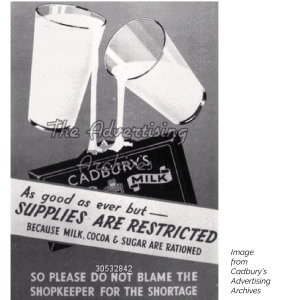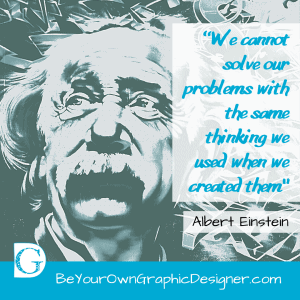“I know half the money I spend on advertising is wasted… I just don’t know which half!”
I used to think this famous statement was really clever and a wry comment on the hit-or-miss nature of marketing.
Now I know more, I think otherwise.
I would love to be able to tell you who actually made the original comment… some say it was Henry Ford (Ford Motors, b.1863-d.1947), others that it was John Wannamaker (US department store magnate, b.1838-d.1922) or William Lever (Unilever, b.1851-d.1925)… but there are so many other candidates I can’t possibly list them all.
Actually, I just googled the keywords ‘Advertising + Half + Wasted’ and I got 9,230,000 results in 0.39 seconds!
I just googled the keywords ‘Advertising + Half + Wasted’ and I got 9,230,000 results in 0.39 seconds! Is advertising a waste of money? Share on XOld sayings like this from well over 100 years ago survive not because they are true but because business owners in a weird way WANT them to be true – it gives them a get-out clause for spending money on advertising and marketing that doesn’t work, and a reason why half the money they spend doesn’t make any sort of return.
What return are you expecting?
 During the Second World War in 1941, the UK government introduced strict rationing of non-essential foodstuffs and so the production of chocolate had to stop and the factories were turned over to making things to support the war effort.
During the Second World War in 1941, the UK government introduced strict rationing of non-essential foodstuffs and so the production of chocolate had to stop and the factories were turned over to making things to support the war effort.
Cadbury’s were laughed at by other sweet manufacturers because, even though they were not allowed to produce and sell their Dairy Milk chocolate anymore, they continued to advertise it on posters and in the press.
So was this money wasted?
 Every time shoppers went to queue up to buy their rations they were reminded of Cadbury’s chocolate, they remembered the taste and talked about it with others in the queue, and, even though they could not buy any, the advertising told them how Cadbury’s was ‘doing its bit’ for the war effort, and that soon everything would be back to normal…
Every time shoppers went to queue up to buy their rations they were reminded of Cadbury’s chocolate, they remembered the taste and talked about it with others in the queue, and, even though they could not buy any, the advertising told them how Cadbury’s was ‘doing its bit’ for the war effort, and that soon everything would be back to normal…
After the war when sweet rationing was lifted, because of the advertising, everybody wanted to buy Cadbury’s chocolate. Sales rocketed!
What Cadbury’s had realised was that advertising is not just about making immediate sales.
Brand recognition and keeping your business at the forefront of people’s perceptions can pay huge dividends in the long run.
Know Your Ideal Client
One of the key elements to getting your advertising right is being very clear who your ideal client is!
Your Ideal Client Profile (ICP) is essential because it crafts your marketing message. Your message needs to speak directly to your audience and, in order to do that, you need to know them well.
You need to use it for ad targeting. When you create ads, you can choose parameters based on the demographics of your buyer persona. It will determine what content you create and help you understand which leads are worth putting resources into pursuing. You can clearly see in the Cadbury’s examples above they were targeting children.
Your ideal customer profile needs two types of data – demographic and psychographic.
Demographics tell who your ideal buyer is. It includes information like age, geographic location, language, marital status, earnings, family, education level, and lifestyle. Even though all this information might not seem strictly relevant to your business, it should be included if there are trends.
Psychographic information is your buyer’s behaviour, values, aspirations, and attitudes. Pay attention especially to their buying behaviour, such as how they make purchases, how much money they spend, how they feel about spending money.
Be clear about what you want to achieve
Before embarking on any advertising or marketing campaign the KEY QUESTIONS to ask are always:
-
-
WHAT SPECIFICALLY DO I WANT THIS ADVERTISING CAMPAIGN TO DO?,
-
WHAT PROBLEM AM I SOLVING FOR MY IDEAL CLIENT? and
-
HOW AM I GOING TO KNOW IF IT WORKED?
-
How to tell which parts of your advertising are working
 In marketing, we use the acronym S.M.A.R.T. Using SMART goals will let you see which parts of your advertising are working.
In marketing, we use the acronym S.M.A.R.T. Using SMART goals will let you see which parts of your advertising are working.
S = SPECIFIC
- What are you hoping to achieve and why you want to achieve it.
- Remember that immediate sales are only half the battle, don’t forget things like brand recognition, customer recall, hits on your website.
M = MEASURABLE
- How are you going to know if your campaign worked?
- Think about not only the number of sales generated, but also measure online activity, footfall and other purchases made during the campaign.
- Try to measure things like gender, age and time of day – all these things add up to a full picture of what is going on.
- Make sure you have something to compare this activity with, i.e., a before and after, otherwise – how will you know to what extent it’s worked?
A = ACHIEVABLE
- How are you going to achieve your goals and do you have enough resources to do it properly?
- List what you will need to do before, during and after, and assess if you can do it all before you start – you may need to re-think or spread things out a bit!
R = RELEVANT
- Why are you doing the campaign?
- Are the advertising/marketing methods you have chosen the best ones to reach your target market?
I’ve also seen the R in SMART refer to ‘Realistic’ - another thing you need to be. It costs money to acquire customers. Thinking that spending £5.00 on Facebook advertising is going to achieve your business goals is naive. As is spending all your time on all the different social media platforms hoping someone will see your posts and immediately buy from you!
Work out how many clients you really need to make your business profitable and then the lifetime value of that client and you’ll feel more comfortable investing in advertising.
Always remember people buy from people they know, like and trust so you need to invest the time for people to get to know you.
T = TIMELY
- Is the time right?
- Have you left enough time for the campaign to work?
- Will you be sending reminders via social media, local radio, press releases?
- When will your campaign stop?
Taking responsibility
There is really NO EXCUSE for falling back on “I know half the money I spend on advertising is wasted… I just don’t know which half!” There is lots of data in the analytics if you’re advertising on Google or any of the social media platforms. You need invest the time in understanding how to interpret it otherwise you’re just throwing your money down the drain.
There is no quick fix but with a bit of very straightforward planning and follow up, you’ll know which parts of your advertising are working, why and where they are working AND you will be able to do it even better next time because you measured it!
 And to take another quote from the past, Einstein said, “We cannot solve our problems with the same thinking we used when we created them”.
And to take another quote from the past, Einstein said, “We cannot solve our problems with the same thinking we used when we created them”.
I hope you found this both interesting and useful. I’d love to hear from you, so please do post a comment in the box below to let us know your advertising experiences!


I love this post! SMART marketing has been around for awhile, but this is the perfect time to revisit it. Your post has broken out the goals very clearly and succinctly. I’ve already started jotting down my bullet points, and it immediately gave me an answer for why I’m NOT doing a programme. Thank you! P.S., love the Einstein quote, too.
I’m so glad you found it helpful, Donja-Marie!